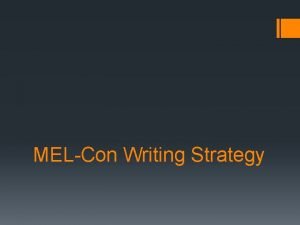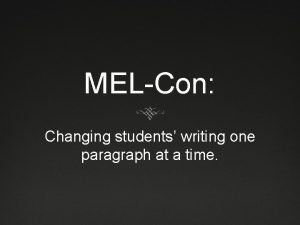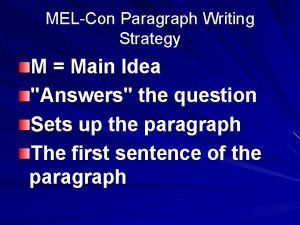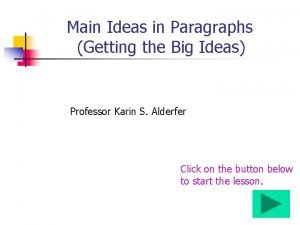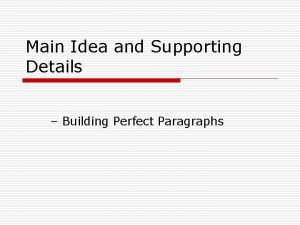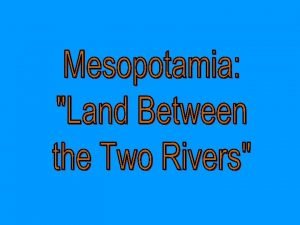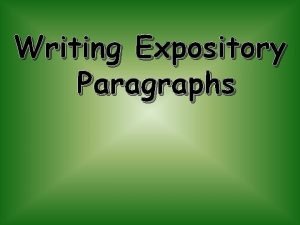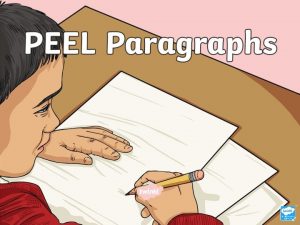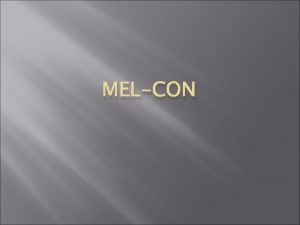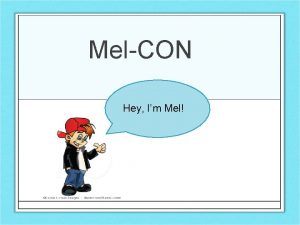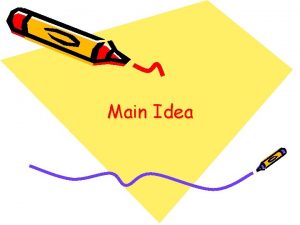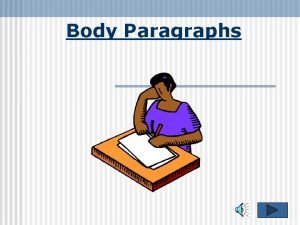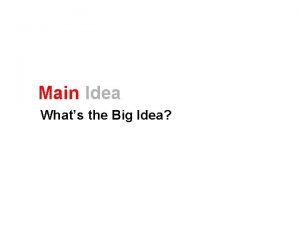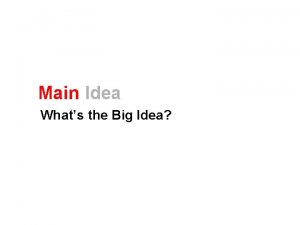MELCon Writing Strategy MELCon Paragraphs Main Idea transitions












- Slides: 12

MEL-Con Writing Strategy

MEL-Con Paragraphs §Main Idea (transitions) §Evidence §Link §Conclusion

A main idea/ thesis statement/ claim does two things: § It makes clear what the paragraph is about—the topic. § It expresses a view or makes a point about the topic.

What is the main idea? GENERAL: __________________ SPECIFIC: 1. Flexible work hours permit employees to work at their peak times of efficiency. 2. Flexible work hours help reduce line-ups at equipment (fax machine and copier, for example). 3. Flexible work hours help reduce rush hour traffic near the office.

Evidence § Evidence are the facts or sources that support your written argument. § Without evidence, an argument is a flimsy statement of one person’s opinion. § Use examples, facts, reasons or quotes to prove the point you have stated that you will prove – in other words, be specific!

Evidence § Should always be prefaced by a transition § Should prove only the main idea – nothing else § Should use information observed or measured (by you or someone else. ) ** QUOTES would fit in this category! § Should not be choppy (TS) Living in the country provides many benefits to health and well-being that city living cannot offer. (E) For example, the country-life is free from heavy pollutants.

Transition § Each piece of evidence needs to be prefaced with a transition. § Avoid “first, ” “second, ” and “third. ” § Helps with flow of paragraph


Link § The why of the argument § Explains what your evidence has proven about your MAIN IDEA § Could move the reader beyond the main idea § Should not repeat main idea word-for-word. Example: (TS) Living in the country provides many benefits to health and well-being that city living cannot offer. (E) For example, the country-life is free from heavy pollutants. (L) This leaves the air cleaner than a city, whose industry and traffic create a smoggy environment and respiratory issues.

Example § The average American citizen today is uneducated on Native American issues. Sadly, many generalize Native American culture to reflect one belief system amongst numerous tribes. If Americans today were more educated on the modern Native American, they would understand that there are many tribes that all have different beliefs and traditions.

Conclusion § The last sentence of the paragraph § Summarizes thesis in original words § Mentions the three pieces of evidence again very briefly § AVOID: "All in all" or "In conclusion" or "Finally" or "To sum it all up"(these are overused, cliché, and boring) Interestingly, country life is arguably better than city life due to cleaner air, the relaxing atmosphere, and the beautiful natural scenery.

Assignment for Friday: § Find an article on a recent issue that can relate in three ways to the Salem Witch Trials. § Work on your template for your MEL-Con paragraph. We will go to the LMC Classroom Lab after the quiz on Friday. You are to type your paragraph from your template and print it out to hand in on Monday.
 Whats a main idea
Whats a main idea Melcon transition words
Melcon transition words Melcon paragraph examples
Melcon paragraph examples Mel-con paragraph example
Mel-con paragraph example Complete the main idea by completing the paragraph
Complete the main idea by completing the paragraph Main idea and supporting details examples
Main idea and supporting details examples Are main idea and central idea the same
Are main idea and central idea the same Supporting idea adalah
Supporting idea adalah Is the main idea the theme
Is the main idea the theme Topic sentence supporting sentence concluding sentence
Topic sentence supporting sentence concluding sentence Sumerian records dmca
Sumerian records dmca Example of a expository paragraph
Example of a expository paragraph Point evidence explain link example
Point evidence explain link example

